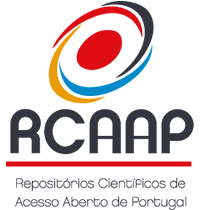Development of image classification models for the identification of earthworms exposed to glyphosate-based herbicide: a pilot study
DOI:
https://doi.org/10.48797/sl.2024.217Keywords:
PosterAbstract
Background: Glyphosate-based herbicides (GBH) may threaten ecosystems and human health [1]. Animal models using earthworms as environmental bioindicators have been proposed [2], but they must be practical and cheaper [3]. Objective: We test if machine learning models of earthworm image classification can be used to identify GBH-exposed environments. Methods: 144 adults Eisenia andrei earthworms were divided into Control (water), GBH1.5, GBH3.0, and GBH6.0 groups (Roundup® Original DI, equivalent to 1.5, 3.0, and 6.0 L/ha). After 48 hours, each worm was photographed at least two times with a mobile camera (76-88 images/group). Random images were used to train models (85%) and separated for testing (15%). Also, we generated 20 artificial images (AI) variations of each original image (OI) using data augmentation techniques using imgaug library [4], reaching >1,600 images/group. Thus, we trained models six times each in Google’s Teachable Machine with 50, 20, and 10 epochs (learning rate=0.001; batch size=16) using OI with the four (OI-4G) or two groups (OI-2G, Control vs. GBH6.0), or using AI (AI-4G or AI-2G). The resulting models were tested using Python with new images, and the accuracy was compared using 2-way ANOVA, followed by Tukey's test. Results: The OI-2G model showed better accuracy when trained with 50 epochs (P=0.02), but the AI-2G model presented the best accuracy in all epochs tested (P < 0.002). In contrast, the OI-4G model presented the worst performance compared to the others (P<0.0001) (% Accuracy: OI-4G=52±5; OI-2G=77±5; AI-4G=79±3; AI-2G=93±3). When tested, AI models had lower accuracy when compared to OI models (%Accuracy: OI-4G=47; OI-2G=86; AI-4G=38; AI-2G=65). Conclusions: It is possible to detect the presence of GBH in the soil by evaluating earthworm images using machine learning models, even with small sample sizes (photos) and without images created artificially. Models need to be improved to detect the concentration of GBH.
References
1. Van Bruggen, A.H.C. et al. Environmental and health effects of the herbicide glyphosate. Sci Total Environ (2018) 616-617, p. 255-268.
2. Zaller, J.G. et al. Effects of glyphosate-based herbicides and their active ingredients on earthworms, water infiltra-tion and glyphosate leaching are influenced by soil properties. Environ Sci Eur (2021) 33, p. 51.
3. Valle, A.L. et al. Glyphosate detection: methods, needs and challenges. Environ Chem Lett (2019), 17, p. 291-317.
4. Imgaug library documentation: https://imgaug.readthedocs.io/en/latest/
Downloads
Published
How to Cite
Issue
Section
License
Copyright (c) 2024 Diovana Gelati de Batista, Juliana Furlanetto Pinheiro, Isadora Sulzbacher Ourique, Vítor Basto Fernandes, Rafael Z. Frantz, Nuno Costa, Thiago Gomes Heck

This work is licensed under a Creative Commons Attribution 4.0 International License.
In Scientific Letters, articles are published under a CC-BY license (Creative Commons Attribution 4.0 International License), the most open license available. The users can share (copy and redistribute the material in any medium or format) and adapt (remix, transform, and build upon the material for any purpose, even commercially), as long as they give appropriate credit, provide a link to the license, and indicate if changes were made (read the full text of the license terms and conditions of use).
The author is the owner of the copyright.









